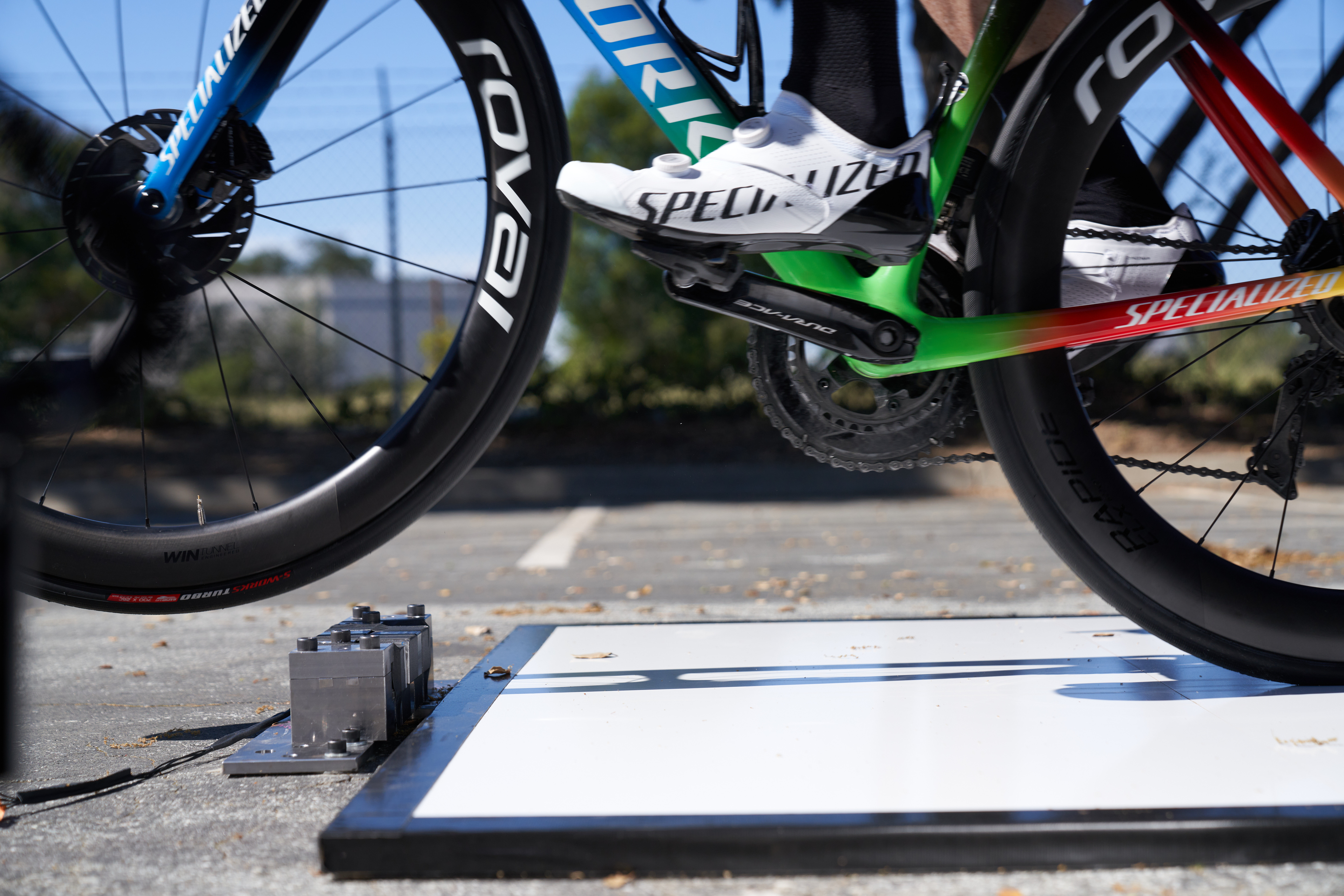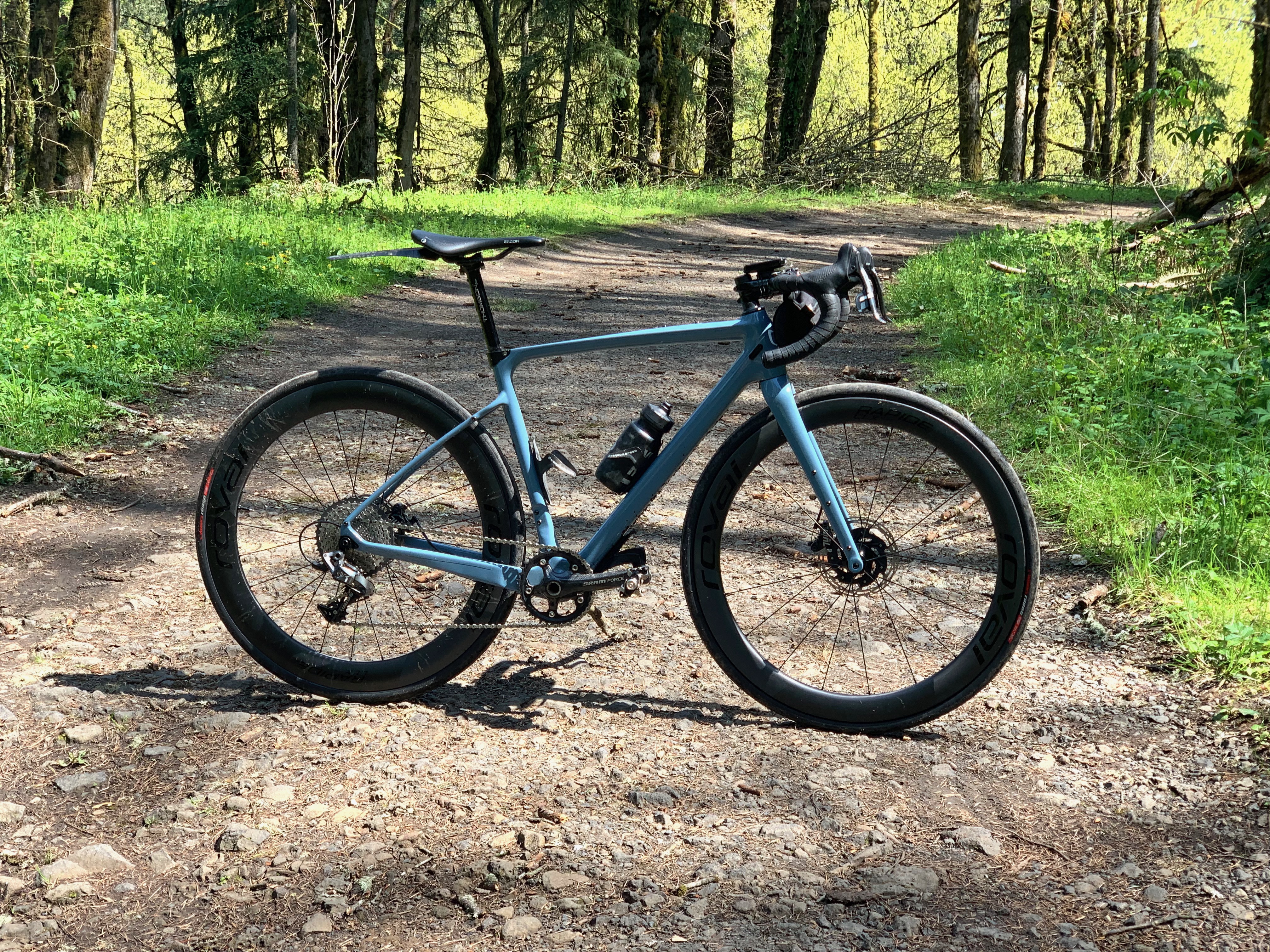Roval goes tubeless with new generation Rapide and Alpinist wheels
The story of why Roval waited this long to go tubeless


When Roval launched the Rapide CLX and Alpinist CLX wheelsets in 2020, it raised some eyebrows by not going tubeless. The brand’s message at the time was that the tube system was simply the fastest. But that wasn’t necessarily the complete story.
Yes, these wheels were indeed the fastest, lightest and best all-around wheelsets Specialized’s sister brand had ever produced. And Roval is quick to point out that over the 2020 and 2021 seasons, Rapide and Alpinist wheels won more races on the World Tour than any other wheels — 155 race wins in fact. However, leading up to the 2022 season, Roval had every intention of adopting a tubeless system, until Peter Sagan destroyed one of the prototypes in training.
In December 2019, Sagan and the Bora-Hansgrohe team were at winter camp, riding the Alpinist CLX wheels that were still in development. The story goes that Sagan was doing Sagan things: jumping a roundabout and running straight into a curb. The front wheel cracked and the tyre burst off. Sagan was unharmed, but the wheel was sent back to the lab for inspection. It had, after all, met all certifying bodies’ standards, including the UCI’s 40 Joule drop test, before it had been sent out for demo-ing. So why did it fail? How did it fail? And why did the tyre come off?
Now, tubeless wheel systems have a different —and more dramatic— failure mode than tubed systems. In case of a big impact, such as Sagan’s antics, a tube can potentially act as a buffer, dispersing the pressure over a larger area and delaying pressure release. The wheel’s structure is therefore more likely to stay intact and the tyre will stay on, allowing the rider to safely come to a stop. Without a tube, cracks in a tubeless rim bed can spread into the rim cavity, and the resulting air pressure creates a failure of the entire system.
While the development wheels would have met all relevant safety standards, the Roval engineers wanted to do better: to create a wheel that would remain structurally sound and keep the tyre on the rim, even if the rim cracked.
And so, the tubeless wheel design went back to the drawing board while the Roval-supported teams were informed that they'd be starting the 2020 season on the same CLX wheels they raced in 2019. However, after getting a taste of these new wheels, the teams said no. Even paired with tubes, the wheels were faster, lighter and handled better than the existing models. Thus, the Alpinist and Rapide were launched as tube-type wheels, and the Roval engineers got started on what would become the brand’s biggest testing and development project yet.

Yves Lampaert of Team Quick-Step - Alpha Vinyl at the 2022 Paris-Roubaix riding the new Roval Rapide CLX II
Setting a higher standard
Now I won't go into the gauntlet of tests, physics, formulas and details that went into the 21 months of testing and development. But to summarise, engineers faced the daunting task of producing tubeless wheels that stayed true to their race-winning shape, weight and aerodynamic performance while also making them sturdy enough to stay structurally sound in case of a seriously big impact. They surveyed riders, completed dozens of new carbon layups and devised entirely new tests, testing standards and contraptions.
The latest race content, interviews, features, reviews and expert buying guides, direct to your inbox!
One test involved riders physically running their bikes into a sensor-filled, 6-centimetre high solid block of metal while going at least 32kph in order to measure accurate force information, which then was applied to a striker drop test. Having handled the metal brick myself, I’ll admit I wouldn’t have had the guts to force my bike into such a path, but it’s reassuring to know these wheels could handle it. All in all, these tests resulted in a new internal impact standard that nearly doubles the current industry standards, 70 joules. To relate, hitting a pothole or railroad tracks at 32kph generates approximately 30 Joules of force. A 70 joule force impact would make staying upright very unlikely.
In the end, the Rapide CLX II and Alpinist CLX II wheels unveiled to the public in May 2022, are the strongest Roval has ever made at the lightest possible weight. Roval feels so strongly about their higher standards and testing procedures that they wrote a white paper and shared it with the relevant governing bodies.
We already saw a glimpse of the new Rapides used at Paris-Roubaix and Remco Evenepoel won atop the Alpinists CLX II at Liège-Bastogne-Liège. So let’s have a look at the details.

An all-new impact testing method: riders physically rode their bikes into a sensor-filled, solid block of metal while going at least 32kph in order to measure accurate force information, which then was applied to a striker drop test.
Rapide CLX and Alpinist CLX: Generation II
Tubeless-Ready:
Late to the game, but Roval’s ‘winningest wheels’ are now available with the lower rolling resistance, better grip, and flat protection benefits of a tubeless system.
Hooked Rims:
Roval opted for a hooked rim instead of a hookless system to ensure secure bead retention and tyre compatibility with most brands on the market. It also allows for inflation up to 110psi, if that’s your thing. With an internal width of 21mm, the rims can fit tyres between 24 and 38mm. Roval even promises an easier at-home set-up and roadside dismounting experience than ever before. The shifting of the outer rim diameter dimensions is said to create an extra 1.4mm of bead slack in the tyre for few tyre struggles.
All-terrain:
Compatible with tyres up to 38mm, these wheels are ready to get rowdy, be it on the cobbles of the Paris-Roubaix or grinding gravel.
Ease of mind:
Confident in their new impact standards, Roval backs the wheels with a lifetime warranty and a no-fault crash replacement policy.





Alpinist CLX II: Functional Minimalism
With the original Alpinist, Roval set out to produce the ‘lightest, best-handling clincher wheels’ they’d ever made. While mass and weight were the focal point of the first generation Alpinist, the tubeless Alpinist CLX II adds in ride quality and safety for real-world road pressures.
“It’s the wheel most people should be riding,” one engineer told me. “It’s got low mass, low inertia, and is super responsive yet has a dampening quality over rough roads.”
The 33mm rim of the second generation Alpinist features the most precise carbon layup Roval has ever created to ensure that the now-tubeless Alpinist remains featherlight while also responsive, strong and durable.
To stay close to that 1250gram mark set by the first generation Alpinists, Roval carved 50 grams from the hub. The Alpinists CLX II wheels have ditched the AeroFlange hubs and instead come with an all-new, low-profile LFD hub with machined brake rotor mounts. Inside the hub, DT Swiss EXP internals and SINC ceramic bearings are used to deliver smooth efficiency and outstanding durability.
The handbuilt wheels have a claimed weight of 1265g with tubeless tape and valves, and retail for £2500 / $2650.
Read our impressions of the new generation Alpinists in our full-length review.





Rapide CLX II: Stable Speed
Tubeless compatibility aside, it’s hard to detect much difference between the first and second generation Rapides. The Rapide CLX wheelset still consists of two different rims: a 51mm-deep front rim with a 35mm external width, and a narrower but deeper rim in the back that’s 60mm deep and 30mm external width.
The rim shape was optimised for the unique aero challenges of its position on the bike and rider stability. Combined, the wheels are said to be faster than most 65mm-deep wheels on the market while also being 25% more stable than the Roval CLX50 in windy conditions. Any speed advantage between the first and second generation Rapide CLX wheels come from the lesser rolling resistance when set up tubeless.
The AeroFlange hubs make use of DT Swiss’ latest EXP freehub with new ceramic SINC bearings and a lighter and simplified ratchet system. This system spreads the bearings further apart for added stiffness while making the ratchet more reliable and easy to swap freehub bodies.
The wheelset comes in at a claimed 1520g w/ tape and valves, which is around 105 grams heavier than the 2020 tube-type version, and retails for £2500 / $2800.
Read our impressions of the new generation Rapides, in our full-length review.



Cycling Weekly's North American Editor, Anne-Marije Rook is old school. She holds a degree in journalism and started out as a newspaper reporter — in print! She can even be seen bringing a pen and notepad to the press conference.
Originally from the Netherlands, she grew up a bike commuter and didn't find bike racing until her early twenties when living in Seattle, Washington. Strengthened by the many miles spent darting around Seattle's hilly streets on a steel single speed, Rook's progression in the sport was a quick one. As she competed at the elite level, her journalism career followed, and soon, she became a full-time cycling journalist. She's now been a journalist for two decades, including 12 years in cycling.